Insight & Strategy: Naming the Invisible by Digital Birth Registration
How a telco proved the power of connectivity by registering undocumented children in Pakistan
This article was originally published in Contagious I/O on 4 October 2021
Share this post
According to telecommunications company Telenor Pakistan, 60 million Pakistani children don’t have a registered birth certificate. Without this, children cannot get access to medical care, social security, public schooling or protection from underage marriage and child labour.
To combat this issue and ensure that children born in rural areas are registered, Telenor in partnership with agency Ogilvy Pakistan in Islamabad, the Pakistani government and Unicef, launched the Digital Birth Registration project. This SMS-based Android app enabled authorised community leaders, such as healthcare workers, to record birth rates and register children for a birth certificate, bypassing the existing paper-based process. All they had to do was submit key pieces of information, such as the parents’ names and address, and take photos of existing documents. This information was then cross-checked with official local government databases.
Results / According to the agency, the Naming the Invisible by Digital Birth Registration initiative resulted in a 300% increase in birth registrations with 1.4 million children across 426 villages being registered. The average processing time to register a birth was reduced from three days to 10 minutes.
The project won Grands Prix in Mobile and Media at the 2021 Cannes Lions Festival. Telenor has since launched a pilot replicating the project in Myanmar.
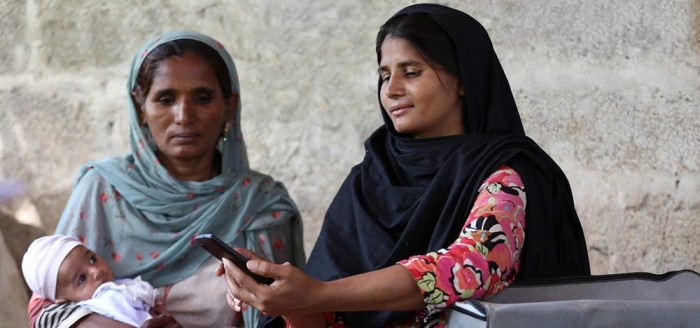
Contagious caught up with Yasir Yasin, head of marketing at Telenor, and Hamza Iftikhar, Ogilvy Pakistan account director, to find out more about how and why the telco launched the initiative. They told us:
- The project was a response to an ongoing brief around finding opportunities for Telenor to make a difference in society
- The collaboration with on-the-ground facilitators was crucial to gain the villagers’ trust and convince them to share their personal details in order to register the births. It also helped overcome problems of illiteracy and digital illiteracy
- Telenor decided to tackle birth registrations because Unicef and the government of Pakistan had identified this as a major barrier to inclusion in Pakistani society
Can you tell me more about Telenor and how it fits into the Pakistani telecoms market?
Yasin: There are four players in the market. In terms of subscriber base, we’re number two. We’ve got broad coverage across Pakistan with respect to both GSM and data services.
Iftikhar: It’s a very saturated industry. Telenor stands for empowerment. It’s the only telco that has worked towards digital transformation in the country and has introduced several breakthrough digital interventions that empower people. We were transitioning our brand positioning towards a brand that every Pakistani wants and needs. Why would that person want it? Because of the positive impact we’re creating, not just the fact that we’re selling data or we’re selling like a bundle or other service that we’re providing, but we’re actually providing goodwill to them.
If a brand plays a role in improving the lives of an individual that creates the kind of love that no offer or price point could beatYasir Yasin, Telenor
How is this initiative linked to Telenor’s brand?
Yasin: As a brand we’re committed towards connecting people so that they’re empowered to do more, be more and achieve more. This entire initiative is very close to the brand because it makes people believe the impact that Telenor has in their lives. Imagine the kind of brand love that we could create. Everybody’s selling offers and everybody’s selling packages and prepaid plans. Imagine a brand going overboard to contribute to your life, and to the wellbeing of your kids and the generation to come. As a brand, we feel that we’ve been able to create more love. We’ve been able to win the trust of these consumers, we’ve been able to win their loyalty as well. If a brand plays a role in improving the lives of an individual that creates the kind of love that no offer or price point could beat. Imagine the word of mouth, imagine what that could contribute to the brand. As a brand we want to create a meaningful impact in people’s lives. If an uncovered village gets connectivity, the future of that village changes.
How and why did this project start?
Yasin: We’re always looking for opportunities where we can bring our brand promise to life, which is connecting people to what matters. We are actively looking for opportunities where we can meaningfully create a difference within society and make positive changes in individuals’ lives.
Iftikhar: This project began in 2016 where Telenor joined hands with Unicef and the government of Pakistan. A pilot was launched in just a few union councils [districts] in Sindh and Punjab, two major provinces. We wanted to just test it out and see if it actually works. From there, the project picked up scale, Telenor created an application with which people could actually go door to door and convince parents in those areas to get their children registered.
Imagine if 60 million people, which is a huge chunk of the population in the country, were devoid of a national identity, a basic human right. Giving them access to their identity could change their life.Hamza Iftikhar, Ogilvy Pakistan
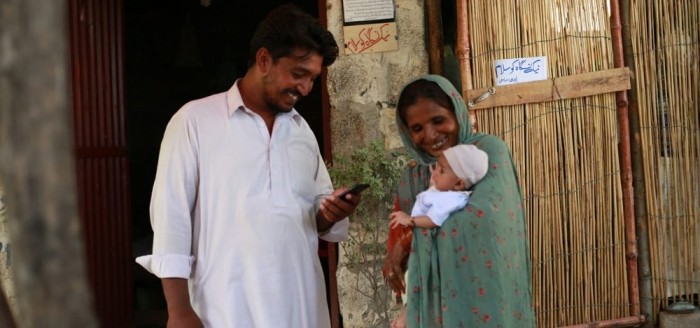
Why did Telenor decide that birth registration was the right area to focus on?
Iftikhar: Telenor, like almost all socially responsible entities in Pakistan, is working towards achieving the UN’s Sustainable Development Goals. One of the key goals is inclusion for all. Unicef Pakistan and the government of Pakistan identified [the lack of birth registrations] as a major bottleneck for inclusion for people in Pakistan. Imagine if 60 million people, which is a huge chunk of the population in the country, were devoid of a national identity, a basic human right. Giving them access to their identity could change their life.
Yasin: When you talk about individual rights it all starts with an identity. You’ve got to know if a person exists, only then can you plan for that person, can you give them the rights that they need or build the infrastructure to support that population.
Did you do any research before the launch?
Iftikhar: Yes, there was quite a lot of research. The challenge at hand was so extensive that it couldn’t have been executed without a lot of research. Also, when you are talking about achieving UN Sustainable Development Goals there are lots of organisations that have the same shared vision. There was GSMA [an industry organisation for mobile network operators], which also has the same goal of outreach for good and using mobile connectivity for better positive outreach. They came to Pakistan and helped Unicef and Telenor with very extensive research including an on-ground assessment and analysis of what areas could benefit most.
Were there any particular insights that helped you with the development of the project?
Iftikhar: The biggest insight that we picked up was the fact that when we were looking to increase inclusion, especially in the rural areas of Pakistan, the biggest asset that we had was our mobile reach. In Pakistan, there is 85% teledensity [ie, the number of telephone connections for every hundred individuals living within an area] across the country and more than 60% of the population lives in rural areas. As a company, Telenor’s strength and legacy is that it has provided mobile coverage for and empowered rural Pakistanis. It has not just given these people connectivity with the GSM calling or data but it has taken up a lot of endeavours and initiatives [to empower them]. We realised that we could capitalise on our tech muscle to be able to get to these far-flung areas, because nobody else was able to go there.
We started with nine villages and thought we will go and see if it really works. What happened was that there was quite a lot of uptake and positive outreach. All of this was not just digitally powered, we had to assist a lot of the audience that was completely illiterate and had no idea of how to fill out the paper-based forms. That required a lot on-ground support. In some villages we partnered with Lady Health Workers [female community healthcare professionals dealing with underserved populations], to build credibility and endorsement. In some villages, the clergy was an important touchpoint.
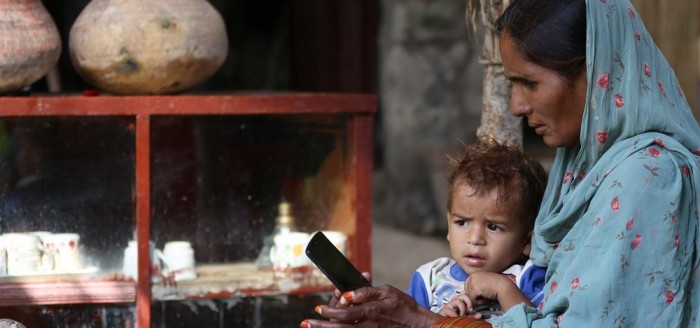
So these facilitators were equipped with phones and they would get the data by going door to door?
Yasin: Yes. It was important for us to find a way to leverage our partners’ strengths and bring in a real change. So we used the footprint that our partners in government had on the ground with respect to Lady Health Workers, union council employees, other on-ground field staff. They were all literate enough to use a mobile handset. The government itself does not have the capability to open up a Database Registration Centre in every village, so the idea was to leverage the existing muscle and give them a tool that they could use.
Iftikhar: We needed to be able to assist people who are uneducated. They do not have any kind of digital literacy, to the point where they might know how to use their mobile phones but they don’t know how to enter information or fill out a form. There was a group of authorised personnel, which included health workers on a regional level and marriage registrars. These people went from house to house as part of their regular responsibilities. In Pakistan, everybody who’s registered has a national identity card. If the parents are registered and the child is not, the rural health worker takes a picture of the parent’s ID card and that goes to a local government institution. When the facilitators updated the app with the new data, the system would instantly verify that this information is correct and then they would get a birth certificate on that mobile device. If you needed to get a printout of it you could actually visit the office but you could get a PDF or JPG of that particular certificate.
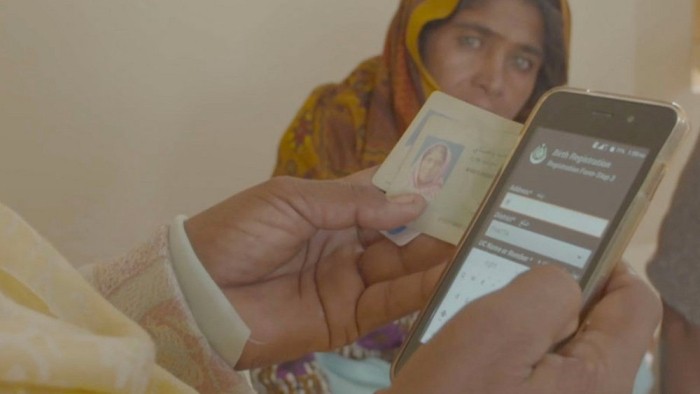
What were your biggest challenges with getting this off the ground? I’m assuming that literacy and digital literacy were huge barriers?
Iftikhar: That was our biggest challenge. There are so many children who are in their teenage years and are not registered as Pakistani citizens only because people are unaware of how it’s done. In urban centres, it’s very convenient but people in these rural areas don’t know where to go. The process requires documentation and to write something down, to be able to comprehend some information, decipher what’s in a form. So many of these people cannot read or write whatsoever, even things as basic as writing their name or address. The first ever child to have been registered on this app was almost a teenager. His name was Jeet, he was a Hindu boy and he and his family could not read or write at all.
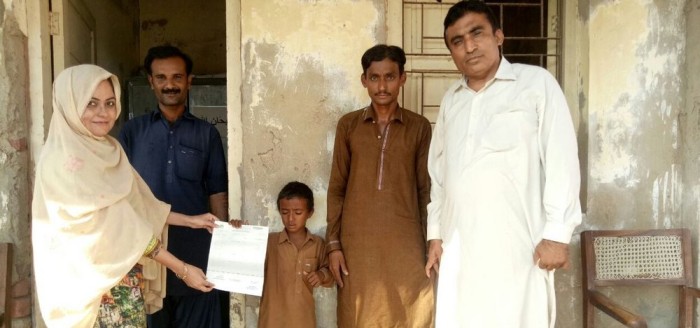
Yasin: The second challenge was how do we make this actually happen? How could we get this data without incurring incremental costs, because then it wouldn’t be viable for any business to support such an idea. So, the breakthrough came when we kind of realised that we could leverage the ongoing field support that the government already has on the ground.
How did you actually convince rural people to register their births?
Iftikhar: If you send out a man to a rural household, and you’re speaking to a mother, it will be a hard task for us to be able to get access to her. That’s why a Lady Health Worker, who is already visiting these houses to provide basic medical care or vaccinations, was able to better convince the women of the household to register. Similarly, religion is a very fundamental part of these villagers’ lives. The fact that the clergy is endorsing it shows it’s not something that’s harmful. All these things helped us build credibility.
Yasin: If we’d sent a stranger, they might not be very comfortable sharing their information, even if it was a female agent. We had to identify people that these people could relate to and trust, because you are asking them to share their very personal data. We were able to convince people to share their information because these individuals were living in these villages.
Did you promote the project at all?
The real beneficiaries of this campaign have been the rural Pakistanis, which is why you won’t see a lot of ATL communications like TV ads. There was a lot of press coverage and there were documentaries made. GSMA collaborated with Telenor to create a documentary called A Case for Change. Internally, Telenor also promoted the project to its employees, for example through daily information emails.
How has the project evolved since it first launched?
Iftikhar: The project is still ongoing. The year 2020 was, as we all know, quite a bummer and something that we were not anticipating. So that had a bit of an impact on how the outreach was planned but now there’s momentum again. When we started off, only nine villages were covered in the pilot. Now, 426 villages in the country are empowered. This is just in two provinces. We haven’t scaled to other provinces, because these two provinces contributed to the maximum cases of unregistered births in the country. Out of those 426 villages, 1.4 million children to date have been registered. The number has grown from 1.2 million in 2020. And out of those, 50% of the children have been girls, so we’ve given equal access to them. That’s the one of the biggest accomplishments, because in Pakistan even if people have access to education, in rural areas specifically, they might not send girls to school. A boy would go to school but a girl wouldn’t. Without being registered she won’t be able to access education or healthcare, she will be devoid of so many other things. Even when she grows up, she won’t be able to be a political citizen, she won’t have the right to vote in the country right. So giving 50% access to girls is a huge accomplishment.
What is your biggest learning from the project?
Iftikhar: My biggest learning is how technology can make have such an impact: 60 million people is not a smaller number, that’s a lot more than our own subscriber base right now. Telenor only has 48 million customers on its network. If you’re able to contribute to registration on such a huge level with just a SIM card, it proves the potential and power that technology has.
Yasin: Another learning is that the reason this project is still going on is because it is self-sustainable.


